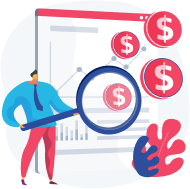Call center software has become an essential tool for businesses of all sizes that aim to provide excellent customer service. With the rise of remote work and the increasing demand for 24/7 customer support, call center software has become more advanced and feature-rich.
This article will explore the top 10 call center software features that can help businesses improve customer service and increase efficiency.
One of the most essential features of call center software is call routing. This feature allows calls to be automatically directed to the most appropriate agent based on factors such as language, skill level, and availability.
List of Top 10 Features of Call Center Software
1. Omnichannel Communication
Multi-Platform Integration
One of the critical benefits of omnichannel communication is the ability to integrate multiple platforms. This means the call center software can integrate with various communication channels like Facebook, Twitter, WhatsApp, etc.
This integration allows businesses to manage all communication channels from a single platform, making monitoring and responding to customer inquiries easier.
Seamless Customer Experience
Omnichannel communication provides a seamless customer experience by allowing customers to communicate with businesses through their preferred channels.
Customers can start a conversation on one channel and continue it on another without repeating themselves. This feature helps to improve customer satisfaction and loyalty, as customers feel that their needs are being met promptly and efficiently.
Omnichannel communication is a critical feature of call center software that allows businesses to offer customers a range of communication channels for a seamless experience.
2. Intelligent Call Routing
Automatic Call Distribution
Automatic Call Distribution (ACD) is a type of Intelligent Call Routing that automatically distributes incoming calls to the most appropriate agent or department. ACD uses various criteria, such as caller ID, time of day, and agent availability, to route calls.
This ensures that customers are quickly connected to the right agent, reducing wait times and increasing customer satisfaction.
Skill-Based Routing
Skill-Based Routing is another type of Intelligent Call Routing that routes calls based on the skills and expertise of the agent. This feature ensures that customers are connected to agents who are best equipped to handle their inquiries.
Skill-Based Routing can also route calls to agents who speak the same language as the caller, improving communication and reducing frustration.
Overall, intelligent call routing is a crucial feature of call center software that can help improve customer satisfaction, reduce wait times, and increase efficiency.
3. Interactive Voice Response (IVR) System
Customizable Call Menus
One of the most significant advantages of the IVR system is its ability to provide customizable call menus. This feature allows businesses to create a personalized menu that aligns with their brand and customer needs.
Companies can customize the prompts, menu options, and responses to meet their needs. Additionally, the IVR can be programmed to provide self-service options, such as checking account balances, making payments, or scheduling appointments, without needing agent intervention.
Speech Recognition
Speech recognition is another essential feature of the IVR system. This technology allows customers to interact with the system using their voice, eliminating the need for touch-tone inputs.
Additionally, speech recognition technology can verify customer identities, reducing the risk of fraud and improving the system’s overall security.
With customizable call menus and speech recognition technology, companies can provide customers with a seamless and personalized experience, increasing satisfaction and loyalty.
4. Call Monitoring And Recording
Quality Assurance
Call monitoring and recording allow supervisors to monitor calls in real-time or listen to recorded calls to evaluate the quality of customer service agents provide. This feature helps supervisors to identify areas where agents need additional training and coaching to improve their performance. Supervisors can help agents meet performance targets and provide excellent customer service by providing feedback and coaching.
Training And Development
Call center software with call monitoring and recording features can provide agents with training and development opportunities. Supervisors can use recorded calls to identify areas where agents need additional training and coaching.
Call monitoring and recording are valuable features of call center software that help ensure that agents provide excellent customer service and adhere to company policies and procedures.
By using this feature, supervisors can monitor and evaluate the performance of agents, provide feedback and coaching, and provide training and development opportunities to improve the skills of agents.
5. Real-Time Reporting And Analytics
Performance Dashboards
Performance dashboards are a call center software’s most important real-time reporting feature. They give managers a real-time view of their call center’s performance, including metrics such as call volume, wait time and agent availability. With this information, managers can quickly identify any issues and take action to address them.
For example, a manager should track the number of calls per agent or the average handle time for each call. With call center software, creating custom dashboards that provide this information at a glance is easy.
Data-Driven Insights
In addition to real-time reporting, call center software provides data-driven insights that help managers make informed decisions. For example, call center software can analyze call data to identify patterns and trends, such as the times of day when call volume is highest or the types of issues that customers are calling about most frequently.
This information allows managers to make data-driven decisions that improve their call center’s performance. For example, they might adjust their staffing levels to ensure enough agents are available during peak call times or provide additional training to agents struggling with a particular issue.
6. Customer Relationship Management (CRM) Integration
Contact History Tracking
One of the key benefits of CRM integration is the ability to track customer contact history. This feature allows agents to view a customer’s previous interactions with the company, including phone calls, emails, and chat conversations. This information enables agents to provide more personalized service and resolve issues more efficiently.
Personalized Customer Interactions
Another advantage of CRM integration is the ability to personalize customer interactions. Call center software can retrieve customer information from the CRM system, such as purchase history and preferences, to tailor the customer experience.
Tracking contact history and personalizing interactions can improve customer satisfaction and loyalty, contributing to the company’s success.
7. Workforce Management
Staff Scheduling
Call center software with staff scheduling capabilities allows managers to easily create and manage employee schedules.
This feature helps to ensure enough agents are available to handle incoming calls, emails, and chats during peak hours. It also helps minimize overstaffing, leading to unnecessary labor costs.
Managers can create schedules based on agent skills, availability, and workload with staff scheduling. They can also make changes to the schedule in real time, ensuring that suitable agents can handle customer inquiries at all times.
Real-Time Agent Assistance
Real-time agent assistance is another critical feature of call center software. It provides agents with the information they need to handle customer inquiries effectively. This feature can reduce call handling times, improve first-call resolution rates, and increase customer satisfaction.
With real-time agent assistance, agents can access a knowledge base about products, services, and typical customer inquiries. They can also receive real-time guidance from supervisors and subject matter experts, allowing them to resolve complex issues quickly and efficiently.
8. Cloud-Based Infrastructure
Scalability
Cloud-based call center software allows for easy scalability, which is essential for businesses that experience fluctuations in call volume.
With cloud-based software, businesses can easily add or remove agents as needed without additional hardware or software. This saves money and allows corporations to quickly adapt to changing call volumes.
Remote Access
Another benefit of cloud-based call center software is remote access. With cloud-based software, agents can work from anywhere with an internet connection. This is especially useful for businesses with remote or distributed teams.
Remote access also allows businesses to quickly set up new call centers in different locations without additional hardware or software.
9. Compliance And Security Features
Data Protection
Call center software must ensure the protection of sensitive customer data. The software should have data encryption capabilities to prevent unauthorized access to sensitive information.
Additionally, it should provide features such as data masking, which hides sensitive data from agents who do not need access to it. The software must also provide secure data storage and backup options to prevent data loss in case of a cyber-attack or system failure.
Regulatory Compliance
Call center software must comply with various regulations, such as the General Data Protection Regulation (GDPR), Payment Card Industry Data Security Standard (PCI DSS), and Health Insurance Portability and Accountability Act (HIPAA).
The software must provide features to ensure compliance with these regulations, such as call recording and monitoring capabilities, which help to maintain compliance with industry-specific regulations.
10. Artificial Intelligence And Automation
Chatbots
One of the most notable AI features in call center software is chatbots. Chatbots are automated programs that can interact with customers in real-time, providing quick and accurate responses to their queries.
Chatbots can also be programmed to escalate complex issues to a human agent, ensuring customers receive the best possible service. By using chatbots, call centers can reduce wait times and improve customer satisfaction, all while freeing up agents to handle more complex issues.
Workflow Automation
Another critical feature of call center software is workflow automation. This feature allows call centers to automate repetitive tasks, such as data entry and call routing, freeing agents to focus on more critical tasks.
Workflow automation can also streamline the customer service process, ensuring customers are routed to the right agent at the right time. This helps to reduce wait times and improve the overall customer experience.
In addition, workflow automation can monitor and analyze call center performance, providing managers with valuable insights into agent productivity and customer satisfaction. These insights allow managers to make data-driven decisions to improve call center operations and drive business growth.
Conclusion
As businesses navigate an increasingly competitive landscape, investing in call center software equipped with these features becomes imperative for staying ahead and meeting the evolving demands of today’s discerning customers.
Middle Eastern software seekers can find software on Zoftware. We help companies identify their goals, evaluate several software solutions, and make well-informed decisions based on real user feedback, all while streamlining the process of finding the best call center software.
Sign up now to find your company’s perfect software solution.





